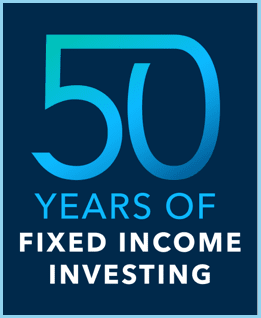Chart in Focus
Bonds
Bonds today provide a sensible option to the dilemma facing investors — what to do as markets ricochet between hopes of a soft landing and concerns of a recession? After a rough 2022, fixed income is back to fulfilling its role as a source of relative stability and diversification from equities.
Meanwhile, the Federal Reserve did its best to keep investors guessing. At their June meeting, policymakers kept the benchmark interest rate unchanged at a range of 5.00% to 5.25%, but left the door open for further hikes amid robust labor markets data and persistent inflation. Central bankers expect to end the year at a rate of 5.60%, implying two additional hikes.
Markets have had to repeatedly readjust expectations as a resilient consumer pushed the Fed to lift rates — ostensibly raising the stakes for a recession. In the bond world, that suggests higher income potential and new opportunities.
Pause, skip or pivot? Investors expect interest rates to decline

Sources: Capital Group, Bloomberg Index Services Ltd., Refinitiv Datastream, U.S. Federal Reserve. Fed funds target rate reflects the upper bound of the Federal Open Markets Committee’s (FOMC) target range for overnight lending among U.S. banks. The market-implied rate is based on price activity in the fed funds futures market, where investors can speculate on where they think rates will be at a future point in time. As of June 14, 2023.
“The possibility of the U.S. falling into a recession over the next year remains elevated as the consequences of the Fed's aggressive rate hiking campaign make their way through the economy,” says Pramod Atluri, Principal Investment Officer for The Bond Fund of America®. Pausing gives the Fed a chance to see the impacts of higher borrowing costs and tighter lending conditions.
Despite expectations of a relatively mild recession, there is a lingering sense that investors are waiting for the next shoe to drop. Money market funds have ballooned to a record $5.2 trillion as investors flocked to cash and cash alternatives. At the same time, bonds have posted moderate gains for the year-to-date period ended June 13, 2023.
One reason behind the run-up is that inflation has declined from last year’s peak and may be on a sustained downward path. “If the economy slows further as an outcome of tight monetary policy and restrained bank lending, it should help maintain that trend and pull inflation down closer to the Fed's 2% target range,” explains Atluri.

2024 Outlook webinar
Thursday, December 14
11 AM PT/2 PM PT
CE credit available
An income ride that offers some shock absorbers
The upshot to higher rates is higher income. The Bloomberg U.S. Aggregate Index, a widely used benchmark for investment-grade (BBB/Baa and above) bond markets, yielded 4.77% on June 13, 2023, compared to a rate of 1.75% on December 31, 2021. Unlike previous upticks we’ve seen over the past 10 years, yields have stabilized at these elevated levels across fixed income sectors. This indicates that strong income may finally persist after decades of low rates and a very painful 2022.
Strong income may persist as bond yields stabilize at elevated levels

Sources: Bloomberg Index Services Ltd., RIMES. As of May 31, 2023. Sector yields above include U.S. aggregate represented by the Bloomberg U.S. Aggregate Index, investment-grade corporates represented by Bloomberg U.S. Corporate Investment Grade Index, high-yield corporates represented by Bloomberg High Yield Index, municipals represented by Bloomberg Municipal Bond Index and emerging markets debt represented by 50% J.P. Morgan EMBI Global Diversified Index/50% J.P. Morgan GBI-EM Global Diversified Index blend. Yields shown are yield to worst. Yield to worst is a measure of the lowest possible yield that can be received on a bond that fully operates within the terms of its contract without defaulting. Past results are not predictive of results in future periods.
Higher rates also mean that bonds are generally better prepared to absorb price or interest rate volatility, making it easier to post positive returns. The total return of a bond fund consists of distributions, price changes and interest paid. Today’s higher interest essentially provides more of a buffer against volatility.
What’s more, if growth deteriorates or out-of-the-blue crises appear, high-quality bonds have tended to provide the important benefit of diversification from equities. Here’s why: These events have often spurred a flight to U.S. Treasuries, which in turn positively impacted bond prices as yields fell. Likewise, yields would fall if the Fed steps in to support growth via rate cuts.
On that front, an inverted yield curve has implied the potential for a recession for some time. As the Fed began lifting rates in March 2022, interest rates on two-year Treasuries rose higher than rates on the 10-year. This yield curve inversion ignited an especially animated discussion among Capital Group’s Fed watchers as to whether the economy would enter a downturn.
Recession risks present opportunities in yield curve positioning

Sources: Capital Group, Bloomberg Index Services Ltd., National Bureau of Economic Research, Refinitiv Datastream. As of May 31, 2023.
For investors, increasing exposure to interest rates now may offer an attractive combination of meaningful diversification from equities and total return potential, Atluri says. If the economy weakens, short-term Treasury yields may drift lower, particularly if Fed rate cuts are more likely. Meanwhile, longer term Treasury yields could remain anchored or even rise. These movements would cause the yield curve to steepen from its current deeply inverted state.
Investors drawn to municipal bonds for their federal and often state tax-exempt status might see a similar benefit. The Fed’s tightening also raised yields for munis, which have historically weathered economic downturns relatively well.
Not all muni issuers will fare equally well, however. “In a sluggish economy I prefer higher quality issuers such as certain housing planned amortization class (PAC) bonds, which offer a steady prepayment schedule,” explains Courtney Wolf, a portfolio manager for The Tax-Exempt Bond Fund of America®. Certain health care bonds are less attractive as labor costs continue to rise and impact earnings.
The current inversion of the muni yield curve, with short-dated munis out-yielding longer dated issues, may also help drive future returns. “I’m actively positioning the funds I manage to try to take advantage of this unusual curve shape,” Wolf adds.
Steady consumer spending
Consumers continue to flex their spending power, which has helped keep companies’ balance sheets relatively strong. For the most part, companies have sufficient cash to fund operations and growth plans.
The premium investors pay over Treasuries to hold investment-grade or high-yield bonds, or spreads, are wider today compared to their levels prior to the current hiking cycle. This suggests some form of economic pain ahead.
Many investors are particularly wary of adding high-yield bonds, which are riskier than investment-grade bonds. However, while past results are not predictive of the future, for those with a time horizon of at least one year, investing in bonds with current yields of around 8% has historically offered solid returns.
Fundamentals are especially important as corporate profitability comes under pressure in the face of rising costs and higher interest rates, says American High-Income Trust® portfolio manager Tara Torrens, who expects a slowdown.
“I’ve positioned the portfolios I manage to be more cautious toward cyclical industries such as retail, autos and anything highly exposed to commercial real estate. In this environment, I prefer more defensive companies and bonds that are secured,” Torrens adds.
Improved quality may lead to fewer defaults in high-yield bonds

Sources: Bloomberg Index Services Ltd. As of December 31, 2022.
The quality of the high-yield universe has improved, with nearly half the market carrying the highest rating (BB/Ba). One reason is that many companies with riskier financial profiles have opted to raise funds in the private credit and leveraged loan markets, or secured loans provided by lenders to companies with high debt loads. Private credit, in which money is lent directly to companies in private rather than public markets, has grown nearly five-fold since 2007.
Taken together, defaults will likely increase but remain low compared to prior recessions. And while spreads could widen in a downturn, investors waiting for better entry points may not see them, given the improved profile of high yield.
Meanwhile, some of the best values can be found in munis, according to Wolf. Many states and local governments continue to reap the benefits of unprecedented pandemic-era stimulus. According to the National Association of State Budget Officers, growth in state budgets and reserves remains strong after record-breaking increases in 2021 and 2022. Project-specific revenue bonds such as those issued by toll roads have been able to pass higher costs to consumers, improving their revenue streams.
Is the best yet to come for bonds?
After a rather cruel 2022, in which fixed income didn’t even offer diversification from equities, investors may want to give bonds another chance. Attractive yields offer income potential across bond asset classes. An active manager can seek to provide further value by managing interest rate sensitivity, sector allocation, security selection and other levers.
“Looking forward, as inflation falls, growth slows and the Fed's rate hiking cycle nears the end, I expect interest rate volatility will fall and bond prices will rise,” Atluri says.
As recession talk heats up, more investors could turn to bonds in search of relative stability and income. “We’ve come a long way from just a year ago, and I’m excited about the opportunities in front of me,” he notes.
Investing outside the United States involves risks, such as currency fluctuations, periods of illiquidity and price volatility, as more fully described in the prospectus. These risks may be heightened in connection with investments in developing countries.
The return of principal for bond funds and for funds with significant underlying bond holdings is not guaranteed. Fund shares are subject to the same interest rate, inflation and credit risks associated with the underlying bond holdings. Lower rated bonds are subject to greater fluctuations in value and risk of loss of income and principal than higher rated bonds. Income from municipal bonds may be subject to state or local income taxes and/or the federal alternative minimum tax. Certain other income, as well as capital gain distributions, may be taxable. While not directly correlated to changes in interest rates, the values of inflation linked bonds generally fluctuate in response to changes in real interest rates and may experience greater losses than other debt securities with similar durations. The use of derivatives involves a variety of risks, which may be different from, or greater than, the risks associated with investing in traditional cash securities, such as stocks and bonds. Bond ratings, which typically range from AAA/Aaa (highest) to D (lowest), are assigned by credit rating agencies such as Standard & Poor's, Moody's and/or Fitch, as an indication of an issuer's creditworthiness.
The indexes are unmanaged and, therefore, have no expenses. Investors cannot invest directly in an index.
Bloomberg U.S. Aggregate Index represents the U.S. investment-grade fixed-rate bond market.
Bloomberg U.S. Corporate High Yield Index covers the universe of fixed-rate, non-investment-grade debt.
Bloomberg U.S. Corporate High Yield 2% Issuer Capped Index covers the universe of fixed-rate, non-investment grade debt. The index limits the maximum exposure of any one issuer to 2%.
Bloomberg U.S. Corporate Investment Grade Index represents the universe of investment grade, publicly issued U.S. corporate and specified foreign debentures and secured notes that meet the specified maturity, liquidity and quality requirements.
Bloomberg Municipal Bond Index is a market value-weighted index designed to represent the long-term investment-grade tax-exempt bond market.
The J.P. Morgan Emerging Markets Bond Index (EMBI) Global Diversified is a uniquely weighted emerging market debt benchmark that tracks total returns for U.S. dollar-denominated bonds issued by emerging market sovereign and quasi-sovereign entities. J.P. Morgan Government Bond Index — Emerging Markets (GBI-EM) Global Diversified covers the universe of regularly traded, liquid fixed-rate, domestic currency emerging market government bonds to which international investors can gain exposure. The 50%/50% J.P. Morgan EMBI Global/J.P. Morgan GBI-EM Global Diversified blends the J.P. Morgan EMBI Global Index with the J.P. Morgan GBI-EM Global Diversified Index by weighting their cumulative total returns at 50% each. This assumes the blend is rebalanced monthly.
BLOOMBERG® is a trademark and service mark of Bloomberg Finance L.P. and its affiliates (collectively “Bloomberg”). Bloomberg or Bloomberg’s licensors own all proprietary rights in the Bloomberg Indices. Neither Bloomberg nor Bloomberg’s licensors approves or endorses this material, or guarantees the accuracy or completeness of any information herein, or makes any warranty, express or implied, as to the results to be obtained therefrom and, to the maximum extent allowed by law, neither shall have any liability or responsibility for injury or damages arising in connection therewith.
This report, and any product, index or fund referred to herein, is not sponsored, endorsed or promoted in any way by J.P. Morgan or any of its affiliates who provide no warranties whatsoever, express or implied, and shall have no liability to any prospective investor, in connection with this report. J.P. Morgan disclaimer: https://www.jpmm.com/research/disclosures.
Our latest insights
-
-
Economic Indicators
-
Demographics & Culture
-
Emerging Markets
-

Never miss an insight
The Capital Ideas newsletter delivers weekly insights straight to your inbox.
 Pramod Atluri
Pramod Atluri
 Tara Torrens
Tara Torrens
 Courtney Wolf
Courtney Wolf